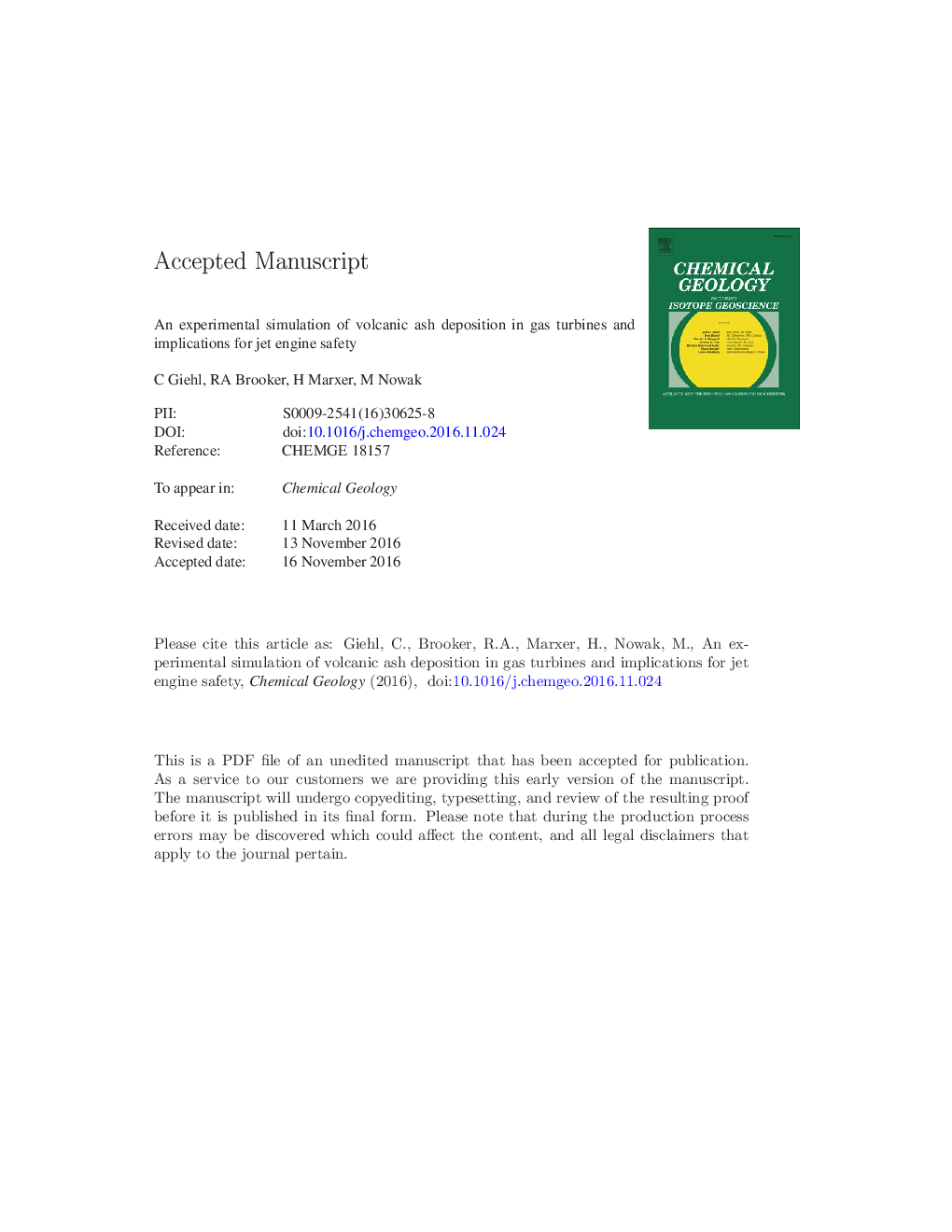| Article ID | Journal | Published Year | Pages | File Type |
|---|---|---|---|---|
| 5782959 | Chemical Geology | 2017 | 30 Pages |
Abstract
A range of volcanic materials are used to simulate ash melting during transport through the combustor and deposition on a turbine blade of nickel superalloy material commonly used for the hot components in jet engines. The results show how 'on-blade' accumulation of molten particles can lead to efficient adhesion (wetting) and subsequent rapid accumulation of further molten material in some circumstances. In other cases particles form a cinder-like layer or entirely bounce off the blade. Any deposits will disrupt the air flow in the turbine, clog the cooling system and eventually cause the engine to stall. However, the cinder deposits can be removed in our experiments (as well as 'in-flight' for a real engine) by shutting off the heat source, allowing the deposit to quench and dislodge by thermal stress cracking. However, this currently recommended airplane safety procedure will not work for more basaltic melts which wet the blade surface more efficiently. Our experiments demonstrate how the nature of the incoming ash particle strongly influences the type of deposit formed, the important parameters being bulk ash composition, crystal proportion and particle size.
Keywords
Related Topics
Physical Sciences and Engineering
Earth and Planetary Sciences
Geochemistry and Petrology
Authors
Christopher Giehl, Richard A. Brooker, Holger Marxer, Marcus Nowak,
